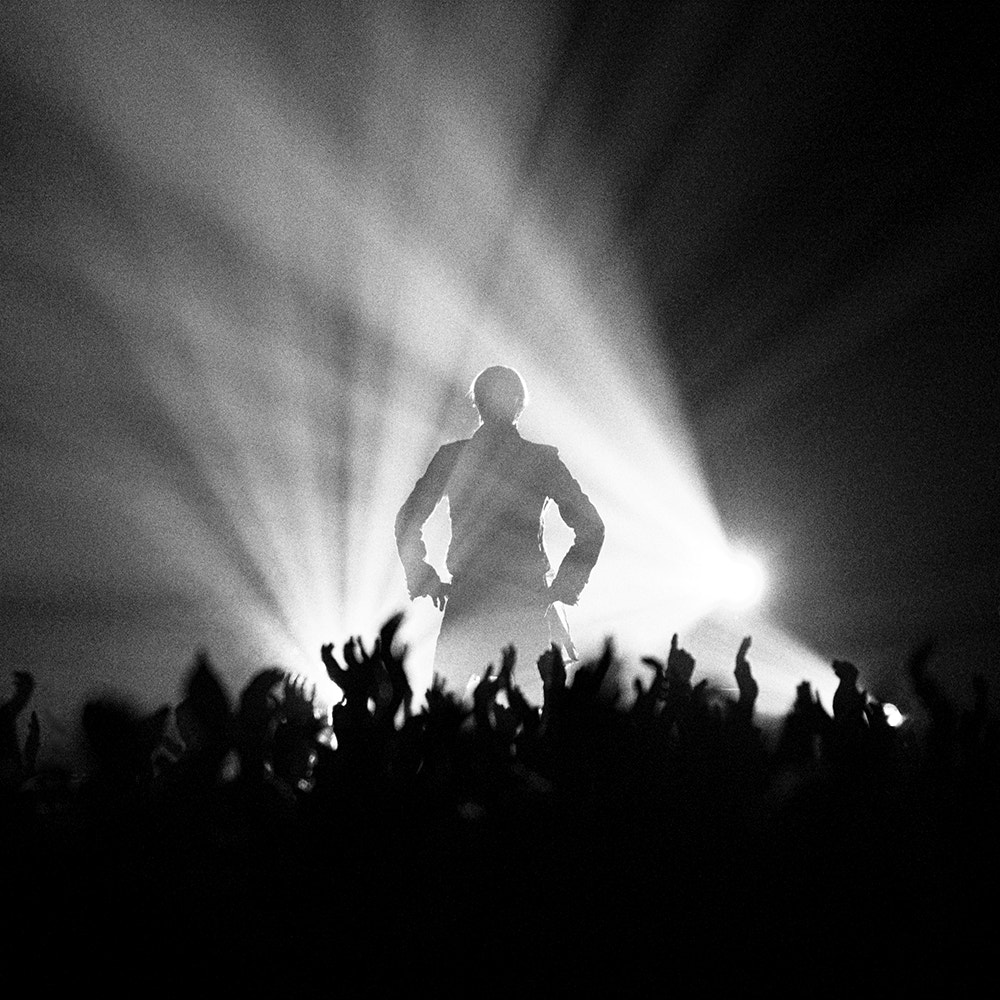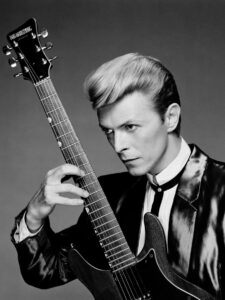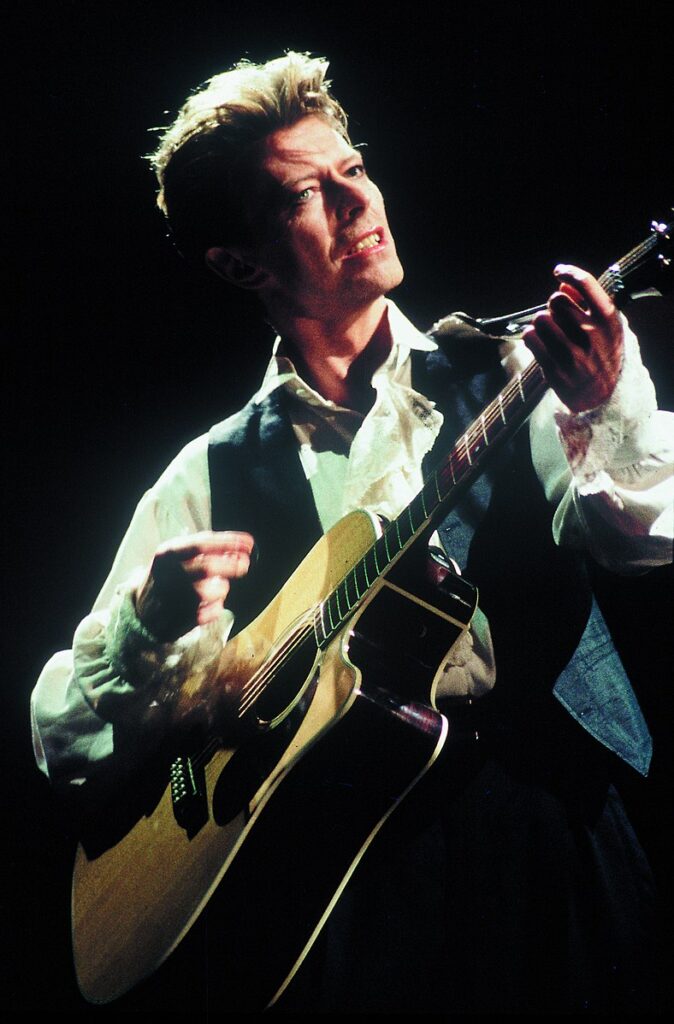Japan has magnetised many globally popular musicians such as John Lennon, Freddie Mercury, Cyndi Lauper and Lady Gaga.
Of course, David Bowie (1947-2016) is no exception, either. His interest in the country’s culture started in the 1960s and led the London-born artist to play the koto on ‘Moss Garden’, a track on the album Heroes (1977), and to adopt hayagawari (quick changes on stage), a technique derived from kabuki. When he captivated millions of fans by performing as the fictional character Ziggy Stardust, the rocker donned avant-garde costumes created by fashion designer Kansai Yamamoto.
Following his first Japan tour in 1973, Bowie visited Kyoto on several occasions. His stays in the city were outlined in The Japan Times by songwriter and journalist Nick Currie:
“I thought of the places in Kyoto — Bowie’s favorite city in Japan — he loved to return to: Tawaraya Ryokan, where he stayed with Iman on their honeymoon, and the now-vanished Cafe David on Sanjo-dori, just opposite the Museum of Kyoto. The “David” in that case was U.S. Sinologist David Kidd (who also died of cancer at the age of 69, back in 1996). Kidd had a house in Kyoto called Togendo, as well as a school dedicated to teaching traditional Japanese arts. Bowie stayed at Togendo in 1979 for some weeks, and even hinted to Western press that the city might become his permanent home.”
The honeymoon brought the couple a chance to watch the Gion Festival in the early 1990s — Fortunately, there remains, as evidence, a photo of Bowie holding a video camera beside his wife in front of a paper lantern-laden float.

Bowie’s favorite places in Kyoto included Misoka-an Kawamichiya, a buckwheat noodle restaurant in Nakagyo-ku. The multi-talented musician is believed to have smacked his lips over tenzaru (buckwheat noodles with tempura), sitting at a table on the second floor and viewing the restaurant’s patio from there.
When it comes to further information about what the English singer-songwriter enjoyed in Kyoto, there is nothing better than having a look at the pictures taken by Masayoshi Sukita, who shot the black-and-white cover photo of Heroes.
Together with Sukita, Bowie strolled around Kyoto between takes of a TV ad at Shoden-ji temple in 1980. Thanks to the photographer’s work, we can still get glimpses of how the maverick virtuoso spent time in the ancient capital.
Bowie had himself photographed, for example, buying a ticket at Karasuma Station, standing in front of a Hankyu train bound for Umeda, holding on to a strap on a Hankyu train, and buying yawata-maki (an eel-and-burdock roll) at Nodaya, a now-defunct store in the Furukawacho Shopping Street. (In addition to some of the pictures mentioned later, these photos can be seen in the web magazine of the accommodation establishment Umekoji Potel Kyoto.)

Other photographs show the music icon sitting back in the corner of Saiun-do, a longstanding shop selling art materials, and enjoying talking with the then proprietor of the store while looking at a photo album. Surprisingly, Bowie was friendly enough to help a junior high school student study English when the musician made himself at home at a now defunct cafe.
Needless to say, the legendary singer did not forget to keep music in mind. He was also photographed dancing lightly at a disco with color lighting up his face. On top of that, he dropped in at a music venue Circus Circus (currently Under-Throw) near Ginkaku-ji and saw techno-pop band P-model perform. I have not found his account of that time, but the details can be traced to some extent thanks to Susumu Hirasawa, leader and guitarist of the quartet. He recalls the unexpected encounter with the music star:
“Panting for breath in the green room (after the live performance), we heard a knock at the door. (When it was opened,) we saw David Bowie standing and smiling from ear to ear. He bowed, saying ‘Dо̄mo.’.”
Hirasawa also recalls asking Bowie to autograph the back of his guitar.
Well, it’s high time we bid farewell to the record of nearly half a century ago and get back to the early 2020s.
In the spring of 2021, Museum Eki Kyoto held an exhibition featuring Sukita’s photos of Bowie in Kyoto. Visitors were helped to learn or remember the good rapport between the musician and the city, but unfortunately the third state of emergency for COVID-19 forced the event to end over a week earlier than scheduled.
Luckily, Kyoto will be able to enjoy recollection of the music heavyweight again as it has been decided that the exhibition makes a comeback between June 25 and July 24.
I hope this story serves as a reminder of how much Kyoto was loved by Bowie (some of the details have been explained only in Japanese up to now). Perhaps it will change how you see the city when you go to places visited by the star.

(photo of a photo courtesy Robert Yellin)
****************
Further information
All photos mentioned in this article (except for one of Bowie and Iman) can be seen here.
*****************
About the author Yuki Yamauchi
For an introduction to Yuki, please click here. For the past three years Yuki has been writing about Kyoto people and places in a series of articles that cover the city’s cultural and intellectual life.
For his piece on Portraits of Uji, click here. For his account of prewar academic critic, Tatsuo Kuriyagawa, click here. And for his piece on theatre and film director, Akira Nobuchi, click here. For his account of Gion Higashi, see here. For a piece on ‘the intellectual giant’, Edward Bramwell Clarke (1874-1934), click here. And to read about the electronic musician, Hajime Fukuma, see here.
(All photos courtesy Wikicommons)

